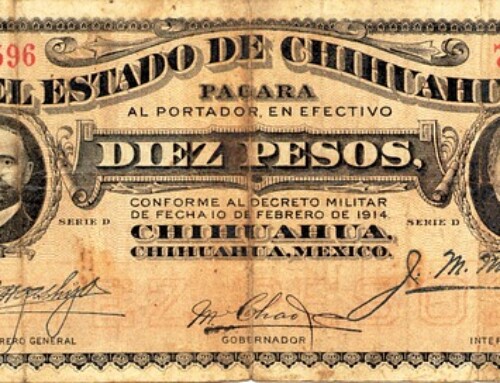Global regulators can urgently intervene to contain the risks associated with cryptoassets. Cryptoassets pose financial risks that require urgent intervention from global regulators.
- The implementation of stricter regulations and rigorous oversight can address the uncertainties associated with cryptoassets.
- The recent collapse of a cryptoasset platform highlights the dangers of these assets without adequate protections. Furthermore, losses in the cryptoasset market and collapses in stable cryptocurrencies have raised concerns about market integrity and financial stability.
- It is crucial to establish international standards and build trust in economic policies, currencies, and banking systems to address these risks. The IMF reports on cryptoasset regulation offer valuable recommendations, and clear requirements should be applied to service providers and stablecoin issuers.
- Strong and adaptive global regulation and supervision are needed to protect users and ensure financial stability.
Uncertainties posed by cryptoassets
The implementation of stricter financial regulations and supervision, along with the development of international standards, can help address many of the uncertainties posed by cryptoassets.
The inherently volatile universe of cryptoassets has once again been shaken by the collapse of one of its major platforms, highlighting the risks associated with cryptoassets in the absence of basic safeguards.
These losses come at an already challenging time for cryptoassets, whose market value has decreased by trillions of dollars. The most prominent among them, Bitcoin, has experienced a reduction of approximately two-thirds of its peak value reached in late 2021, resulting in losses for nearly three-quarters of investors, as revealed in a new analysis published in November by the Bank for International Settlements.
During times of stress, we have witnessed the collapses in stablecoin markets, crypto-focused hedge funds, and cryptoasset exchanges, raising serious questions about market integrity and user protection. Moreover, as the links with the central financial system become increasingly extensive and profound, concerns regarding systemic risk and financial stability in the near future may also arise.
Many of these issues can be addressed through stricter financial regulation and supervision, coupled with the formulation of international standards that national regulatory authorities can systematically apply.
In this context of significant disruptions and disturbances in various segments of the cryptoasset market, as well as recurring cycles of boom and decline in the ecosystem of these digital assets, the publication of two IMF reports on the regulation of the cryptoasset ecosystem is particularly timely.
These reports address the aforementioned issues from two distinct perspectives. Firstly, we adopt a comprehensive approach, analyzing the key entities responsible for performing the most relevant functions in the sector, which makes our conclusions and recommendations applicable to the entire cryptoasset ecosystem.
Secondly, we focus more specifically on stablecoins and related arrangements. These cryptoassets seek to maintain a stable value in relation to a specific asset or set of assets.
New Medium-Term Risks
Cryptoassets, including stablecoins, do not yet pose a risk to the global financial system, but they are already having a significant impact on some emerging and developing market economies. In some of these countries, there is a significant retail holding of cryptoassets, as well as abundant substitution of currencies through them, primarily in the form of stablecoins denominated in dollars. In some cases, a process of cryptoization is taking place.
Cryptoization refers to these assets replacing the national currency and national assets, thus evading exchange restrictions and capital controls.
This substitution could lead to capital outflows and a loss of monetary sovereignty, in addition to endangering financial stability, posing new challenges for authorities. To address the root causes of cryptoization, authorities must promote greater confidence in national economic policies, currencies, and banking systems.
Advanced economies are also vulnerable to financial stability risks stemming from cryptocurrencies as institutional investors have increased their holdings of stablecoins, attracted by higher returns in a low-interest-rate environment at that time. Therefore, we consider it important for regulatory authorities to promptly address the risks associated with cryptocurrencies without stifling innovation.
Specifically, the IMF has formulated five fundamental recommendations on the regulation of the cryptoasset ecosystem in two documents titled:
"Regulating the Crypto Ecosystem: The Case of Unbacked Crypto Assets" | "Regulating the Crypto Ecosystem: The Case of Stablecoins and Arrangements"
- Service providers related to cryptoassets must have appropriate registration, authorization, and corresponding licenses. This category includes those offering storage, transfer, exchange, settlement, and custody services, with standards similar to those applied to service providers in the traditional financial sector. It is of utmost importance that customer assets are segregated from the company's own assets and separated from other functions. The criteria for registration and authorization must be clearly defined, and competent authorities must be duly designated.
- Entities performing multiple functions should be subject to additional prudential requirements. In situations where the exercise of diverse functions may generate conflicts of interest, authorities should consider the possibility of implementing prohibitions. In cases where companies are allowed to perform multiple functions, they must comply with strict transparency and information disclosure requirements, enabling authorities to identify key interdependencies.
- Stablecoin issuers must comply with rigorous prudential requirements. Some of these instruments are gaining acceptance beyond cryptoasset users and are used as a store of value. Without adequate regulation, stablecoins could undermine monetary and financial stability. Depending on the model and scale of stablecoin arrangements, strict banking-like regulation may be necessary.
- It is essential to establish clear requirements for regulated financial institutions regarding their exposures and activities with cryptoassets. If they offer custody services, requirements must be clarified to address the risks associated with these functions. In this regard, we greatly welcome the recent publication of the Basel Committee on Banking Supervision's regulations on the prudential treatment of banking exposures to cryptoassets.
- There will come a time when strong, comprehensive, and systematic global regulation and supervision will be required for cryptoassets. The intersectoral and cross-border nature of these assets makes the effectiveness of uncoordinated national approaches challenging. For global strategy to be effective, it must be capable of adapting to a constantly changing landscape and evolving risk perspectives.
New Risks, New Challenges
In the face of the rapid evolution of cryptoassets, authorities worldwide are confronted with the challenge of containing risks for users, leading some countries to adopt even more drastic measures.
For instance, in the sub-Saharan Africa region, which is the smallest but fastest-growing in cryptoasset trading, nearly one-fifth of countries have implemented various types of prohibitions to mitigate risks.
While widespread bans may be seen as disproportionate, we believe that targeted restrictions can yield better policy outcomes as long as there is adequate regulatory capacity. For example, it is possible to restrict the use of certain crypto derivatives, as demonstrated by Japan and the United Kingdom. Limitations can also be placed on cryptoasset promotions, as seen in Spain and Singapore.
However, while the development of international standards takes time, the Financial Stability Board has done an excellent job providing recommendations on cryptoassets and stablecoins.
Many of the conclusions drawn from the Tecnfinances reports align, demonstrating our close collaboration and shared perspectives on the market.







Leave A Comment